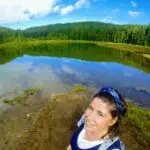
Search for ‘green’ jobs has increased worldwide, study says
A new study by Deloitte concludes that ‘green’ skills and jobs are no longer limited to the traditional ‘green’ areas of the economy and that
Fairtrade’s new map shows the human and climate risks of the world’s major crops.
The Fairtrade system, globally recognized for certifying ethical and sustainable production brands, has just launched the Fairtrade risk map. This interactive tool transparently shares the conditions of workers and the climate impact of agricultural sectors such as cocoa, coffee, cereals, and others around the world.
The platform will be updated over the next few months to show the assessment made by Fairtrade in collaboration with farmers’ cooperatives, workers, plantation management and external experts.
How does the map work?
You can filter your search by country, product, or problem – these include children’s rights, gender inequality, minimum wages, impact on water and biodiversity, and more.
In each country it is possible to find out which Fairtrade products originate, the number of farmers, and the number of workers in Fairtrade-certified organizations and companies.
We did a search for the word “cocoa” and found that the largest producers in the world are Ivory Coast and Ghana (58%) and that in these countries 45% of the children are exploited in the production of chocolate.
Due to the thousands of fans of this product around the world, the supply chain is shaped like an hourglass, which means that there are many producers (about 50 million people involved) but only 9 traders managing 75% of the trade, which strangles the price of the products and threatens the sustainability of the industry. The extreme poverty of these countries is aggravated by the low financial compensation from Cocoa farming, and due to climate change and the aggressive use of biochemicals, the quality of the yields drops dramatically.
How important is this tool?
The Fairtrade risk map is primarily intended to encourage global dialogue between participants in the supply chains – farmers’ and workers’ associations, retailers and brands – so that there is greater accountability on workers’ and planetary rights and concrete measures are taken to combat current problems. You can learn more about Fairtrade projects taking place around the world on this map.
At the same time, as consumers, this tool comes to educate and empower us about the impact of our individual choices so that we can make informed, conscious, and fair decisions. In addition to the Fairtrade seal, there are other sustainable production seals you can look out for when you go shopping – such as Rainforest Alliance, UTZ, or Bio. Whenever possible, opt for small producers and local commerce.


A new study by Deloitte concludes that ‘green’ skills and jobs are no longer limited to the traditional ‘green’ areas of the economy and that

Facebook and Instagram campaigns that encouraged “false or biased” speech about the climate crisis were analyzed. The oil and gas industry spent about 3.7 million

El Corte Inglés and To Be Green, a spin-off from the University of Minho, have joined forces inan unprecedented partnership, to produce 300 new articles

This article promotes an action that encourages the reduction of waste generation through prevention, reduction, recycling, and reuse.
➡️ To discover more businesses that are aligned with Sustainable Development Goal 12 “Sustainable Production and Consumption” click here.
➡️ For news, tips and interviews about this topic, click here
➡️ Want to know more about the 17 United Nations Sustainable Development Goals? Click here
Esta publicação também está disponível em:
![]() Português (Portuguese (Portugal))
Português (Portuguese (Portugal))